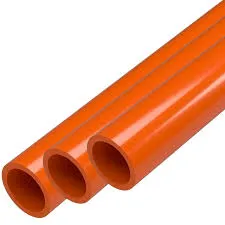Dec . 26, 2024 13:03 Back to list
High-Density Polyethylene Irrigation Pipe Fittings for Efficient Water Management Solutions
Understanding HDPE Irrigation Pipe Fittings A Comprehensive Overview
In the realm of modern agriculture, effective irrigation systems are crucial for maximizing crop yield and ensuring sustainable water management. One of the most popular materials used for irrigation pipes is High-Density Polyethylene (HDPE). Renowned for its excellent durability and flexibility, HDPE is a preferred choice for various agricultural applications. However, the effectiveness of any irrigation system fundamentally relies not just on the pipes themselves but also on the fittings that connect these pipes. This article will explore the significance of HDPE irrigation pipe fittings, their types, benefits, installation, and maintenance.
What are HDPE Irrigation Pipe Fittings?
HDPE irrigation pipe fittings are specialized components designed to connect segments of HDPE pipes used in irrigation systems. These fittings facilitate changes in direction, diameter, or flow within the piping system, ultimately allowing for a more versatile and efficient irrigation layout. As irrigation systems are often customized based on specific farming needs and terrain, HDPE fittings come in various shapes, sizes, and configurations.
Types of HDPE Irrigation Pipe Fittings
Several types of HDPE fittings are available for irrigation purposes
1. Elbows These fittings allow for changes in direction, typically at a 90-degree or 45-degree angle. 2. Tees Used for branching the pipe into two directions; essential for creating lateral lines in irrigation. 3. Reducers These fittings enable a transition between pipes of different diameters. 4. Couplings Couplings are used to join two lengths of pipe together, ideal for extending piping systems. 5. Caps and Plugs These fittings are used to seal off the ends of pipes to prevent water loss. 6. Flanges Flanged fittings provide a secure means of connection between different components of an irrigation system.
Each fitting serves a specific purpose and must be selected based on the design of the irrigation system and the type of crops being cultivated.
Benefits of Using HDPE Irrigation Pipe Fittings
1. Durability HDPE fittings exhibit exceptional resistance to corrosion, impact, and UV rays, ensuring long-term performance in various environmental conditions.
2. Flexibility The inherent flexibility of HDPE allows for installation in challenging terrains without compromising on strength or performance.
3. Cost-Effectiveness While the initial investment in HDPE components may be higher than conventional materials, the longevity and reduced maintenance costs translate to significant savings over time.
hdpe irrigation pipe fittings product

5. Environmental Responsibility HDPE is recyclable, making it a more environmentally friendly choice compared to some traditional irrigation materials.
Installation Considerations
Installing HDPE fittings requires proper planning and execution to ensure optimal performance. Here are some key considerations
1. Proper Welding Techniques HDPE fittings are typically joined using heat fusion methods. Techniques such as butt fusion or electrofusion ensure seamless connections that are as strong as the pipes themselves.
2. Alignment Ensuring proper alignment of pipes and fittings during installation is critical to avoid stress on joints and potential failures.
3. Depth and Compaction When installing pipes, maintain appropriate burial depths and compact surrounding soil to protect the integrity of the entire system.
Maintenance Tips for HDPE Irrigation Systems
1. Regular Inspections Routine checks for any signs of leaks, wear, or damage can help identify issues before they become significant problems.
2. Cleaning Keeping fittings and pipes free from debris or obstruction ensures efficient water flow.
3. Temperature Considerations Monitor temperature changes and their effects on the flexibility and strength of HDPE materials; extreme cold may make the material brittle.
Conclusion
HDPE irrigation pipe fittings play a vital role in enhancing the efficiency and functionality of irrigation systems. With their robust nature, flexibility, and cost-effectiveness, they easily adapt to various agricultural needs. As farming practices continue to evolve, investing in high-quality HDPE fittings can lead to improved water management and sustainable agricultural practices. By ensuring proper installation and maintenance, farmers can maximize their crop yields while also preserving precious water resources for future generations. Understanding and utilizing HDPE fittings is an essential step towards optimizing modern irrigation systems.
-
High-Quality PVC Borehole Pipes Durable & Versatile Pipe Solutions
NewsJul.08,2025
-
High-Quality PVC Perforated Pipes for Efficient Drainage Leading Manufacturers & Factories
NewsJul.08,2025
-
High-Quality PVC Borehole Pipes Durable Pipe Solutions by Leading Manufacturer
NewsJul.08,2025
-
High-Quality PVC Borehole Pipes Reliable PVC Pipe Manufacturer Solutions
NewsJul.07,2025
-
High-Quality UPVC Drain Pipes Durable HDPE & Drain Pipe Solutions
NewsJul.07,2025
-
High-Quality Conduit Pipes & HDPE Conduit Fittings Manufacturer Reliable Factory Supply
NewsJul.06,2025

